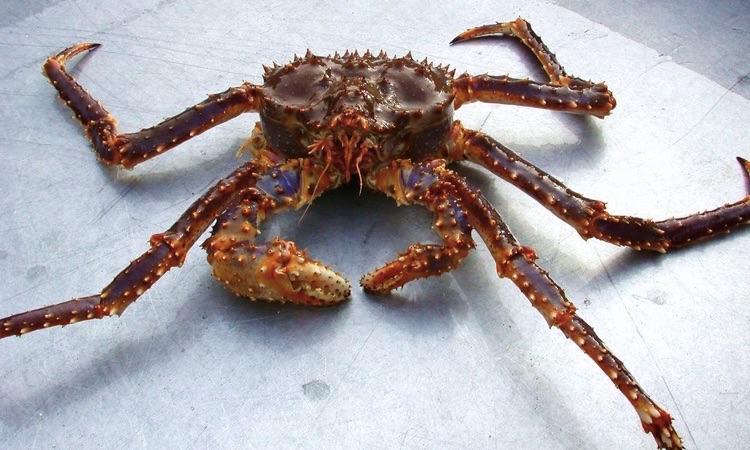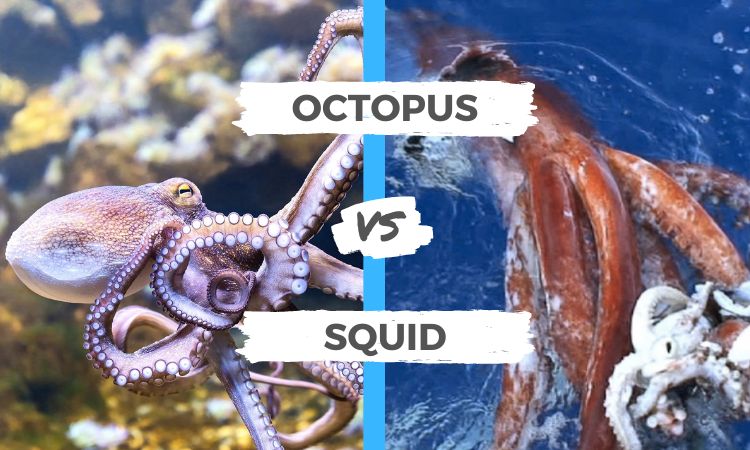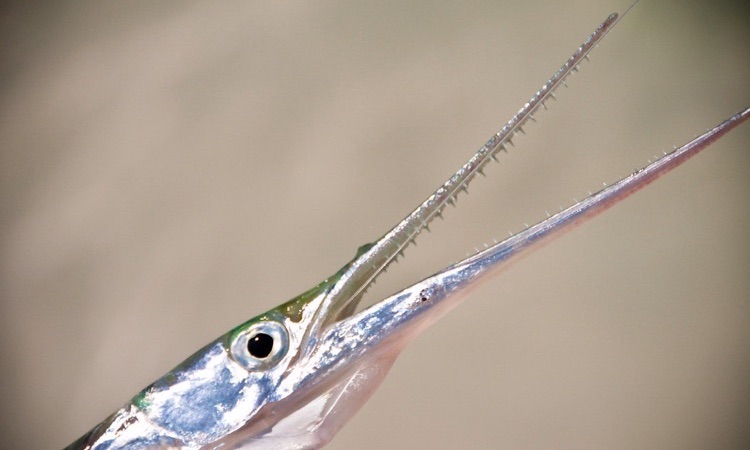The sailfish and swordfish are two of the most amazing fish you’ll ever see. These two billfish, widely recognized as top predators, are sought-after game species for recreational fishermen.
With lean, muscular bodies and long prominent bills, these colossal fish may appear to be the same. That raises an issue: how can you tell the difference between a sailfish vs swordfish? Read on to find out the differences.
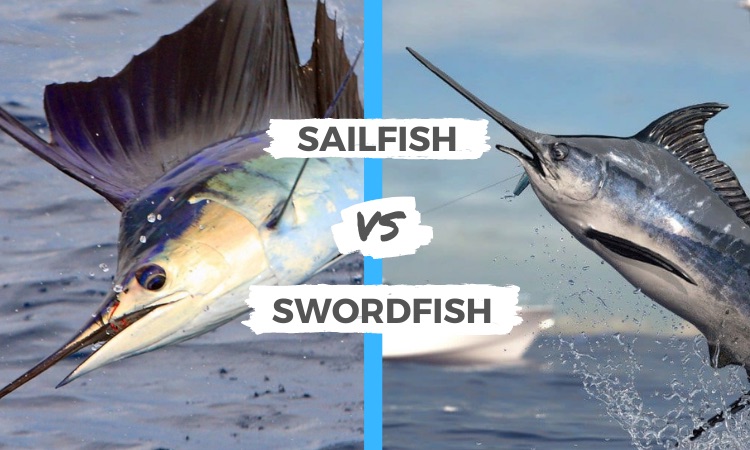
Sailfish vs Swordfish: Distribution and Habitat
The sailfish and swordfish are two temperate-water fish that can be found in the Atlantic, Pacific, and Indian Oceans. They’re both pelagic fish that swim throughout the water column but rarely go to the ocean floor.
While sailfish like temperatures between 70°F and 83°F, swordfish can endure a wider range of temperatures. They may be found in water as cold as 41°F to 81°F. A fun fact is that the organ inside swordfish’s heads heats their eyes and brain, allowing them to hunt in extremely chilly waters!
Swordfish can swim in far deeper parts of the sea than Sailfish, even if they don’t just tolerate colder seas. While sailfish may dive to depths of up to 660 feet, swordfish frequently descend to depths of 1,800 feet!
Behavior
Swordfish are loners by nature and prefer to spend most of their time alone. They like to hunt at night, unlike most fish.
This is why, until a few years ago, anglers almost exclusively fished for swordfish after dark. Daytime swordfishing, on the other hand, has recently been discovered to be just as effective.
Sails are mostly solitary fish, but they’re not as solitary as their relatives. When looking for food, Sails will frequently “school up” to hunt together. Their “herding” tactics are nothing short of brilliant.
Sailfish use their sharp bills to command schools of prey by bumping and slashing. They also change their colors to communicate their intentions, allowing them to collaborate their assault with surgical accuracy.
That’s not all, either. Sailfish are also incredibly quick. These fish are known to be the fastest in the ocean, reaching speeds of up to 68 miles per hour!
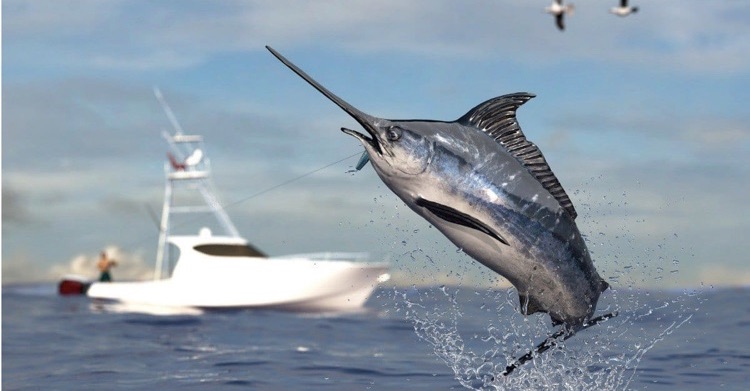
Swordfish vs Sailfish: Appearance
Although they have similar appearances, sailfish and swordfish differ in several physical ways. Their similarities are akin to that of the Swordfish vs Marlin.
Size and Shape
Swordfish are significantly larger than Sailfish, and one of the major distinctions between the two is this. The body of a swordfish, on the other hand, is generally cylindrical, similar to that of a tuna.
Sailfish grow to around 120 inches in length (including the bill) and weigh around 120 or 200 pounds on average.
Depending on where they are from, they may reach a maximum weight of up to 120 or 200 pounds. A typical angler, however, would be able to capture a sailfish weighing between 40 and 60 pounds.
A Swordfish can grow to be more than 130 inches in length, whereas a sailfish seldom exceeds 120 inches. They’re also considerably larger than sailfishes, with a weight of 220 pounds or greater. The largest ever recorded swordfish weighed 1,430 pounds!
Sailfish vs Swordfish: Fins
However, what if you come upon something that appears to be a juvenile Swordfish? Look no further than its fins in that case.
The sailfish’s long, dragon-like dorsal fin extends almost the entire length of its body. The sail-shaped extension becomes wider than the whole body when extended, suggesting a sail (hence the name). A swordfish’s dorsal fin, on the other hand, is a slender crescent-shaped appendage that never changes form.
Other Differences
The differences between a sailfish vs swordfish don’t stop there. The two fish are different in a few other ways that are a little more tricky to spot, but are useful to know nonetheless.
Adult swordfish have no teeth or scales, as do adult sailfish. They shed their scales as they mature, and the smooth, uniform skin takes their place. The bill of a sailfish is thin, spanning roughly a fourth of the body length. The bill of a swordfish is longer and thicker, reaching nearly half of the body length.
The eyes of a swordfish are considerably larger than those of a sailfish. Because they range in deeper and darker seas, swordfish need excellent eyesight. Larger eyes enable them to capture more light than other billfishes.
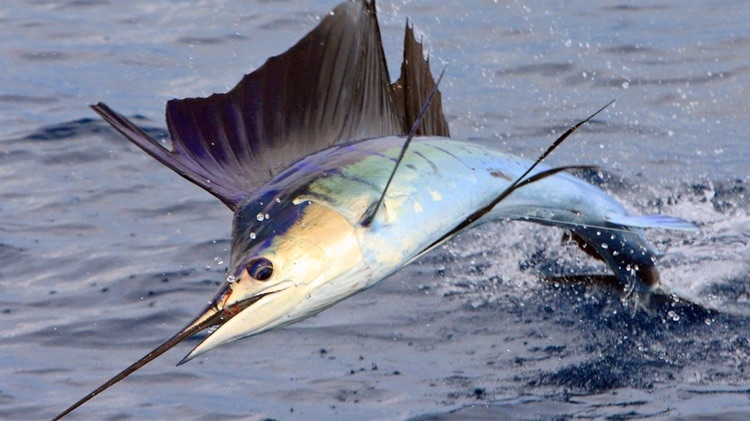
Swordfish vs Sailfish: How to Catch Them
Trolling is a great way to target sailfish since they frequently come close to the surface of the water. They are an excellent light tackle catch, often providing spectacular aerial acrobatics as a result of your efforts. If you’re up for a challenge, use a fly rod to try landing one of these sea monsters!
Deepwater drifting with natural bait is the best method for swordfish. These animals are strong, and most of them need considerably more equipment to land. Most anglers still pursue swordfish at night, but as we said, day fishing may be just as productive.
Both sailfish and swordfish are amazing billfish, each with its own set of merits. There’s nothing to stop you from catching one now that you know how to tell sailfish and swordfish apart!

